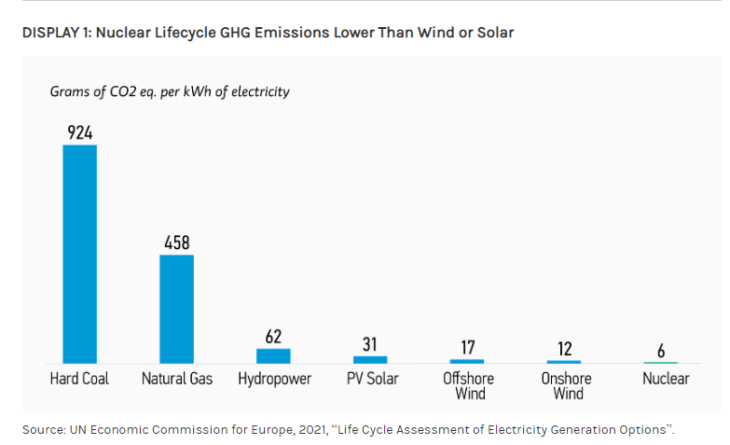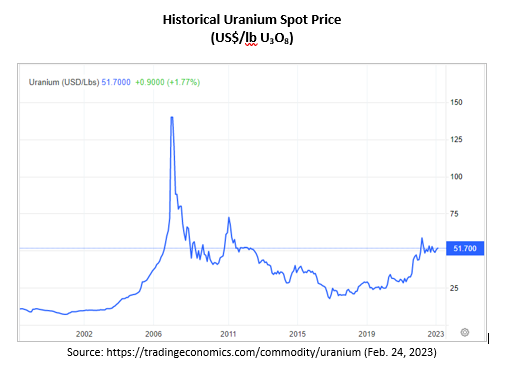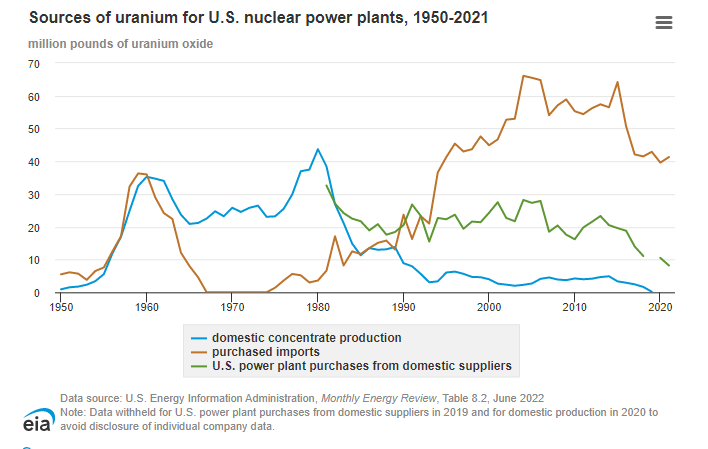The OGM Interactive Edition - Summer 2023 - Read Now!
View Past IssuesMarch 02, 2023
First American Uranium Inc. is pleased to provide an overview of the uranium market and the US-specific potential for growth in nuclear power and uranium exploration and mining. Nuclear energy supplies 10% of the world’s power generation and ~20% of America’s electricity. However, to reach global decarbonization targets, the International Energy Agency projects that nuclear power production will have to increase by 80% by 2040. Shawn Balaghi, First American Uranium’s CEO, commented: “Between increasing international investment in nuclear energy and rising uranium spot prices that are helping drive strong and sustainable economics, there are many factors contributing to the positive outlook for uranium. First American Uranium is excited to be working hard to become part of the US domestic supply solution at this time.”

Major nations are facing growing electricity demand and aggressive decarbonization targets. In turn, a growing number of countries are looking to nuclear power policies, investments and production as potential solutions to their energy mix.
France recently announced €1 billion to support small nuclear reactors and pledged to construct 14 new generation reactors. South Korea set a target for nuclear to account for 30% of their total power generation. China intends to build 150 nuclear reactors over the next 15 years. Even Japan, despite the 2011 Fukushima nuclear accident, recently restarted its nuclear capacity with public support at over 60%.
In America, the Biden administration established a $6-billion fund to keep nuclear plants running. The administration is also providing $2.5 billion for two R&D projects into new nuclear technology and is pushing a $4.3-billion plan to buy enriched uranium from domestic producers to replace Russian imports.
Meanwhile, America’s recent Inflation Reduction Act (IRA) includes ~$369 billion in climate provisions to help ensure energy security and cut US emissions by 40% before the end of the decade. The IRA includes a production tax credit to help preserve the nation’s existing fleet of nuclear plants, several tax incentives for clean energy technologies (including advanced reactors) and invests $700 million to support the development of a domestic supply chain for high-assay low-enriched uranium.
Uranium spot prices have been steadily trending up for years with little volatility, recently reaching their highest levels in over a decade.

Factors that could add further pressure to uranium going forward include:
When it comes to supply, the US produces just 5% of the uranium it uses as fuel while importing the majority from Kazakhstan (35%), Canada (15%), Australia (14%), Russia (14%) and Namibia (7%). US uranium imports began trending up around 1980 while production dropped sharply. Over the last decade, low uranium prices driven by the reaction in some countries to the 2011 Fukushima nuclear incident in Japan, resulted in further reductions in domestic US production.

Today, uranium production in the US is from just one mill in White Mesa, Utah. America’s declining uranium production and its dependence on foreign imports have left the nation and its nuclear energy sector vulnerable to geopolitical conflicts, such as Russia’s war against Ukraine.
Fortunately, the market’s dynamics have recently shifted:
In turn, potential opportunities are opening up for US-targeted uranium explorers and domestic miners to help create clean energy, build national security, and meet growing market demand.
First American Uranium Inc. is engaged in the business of mineral exploration and the acquisition of mineral property assets in North America. Its objective is to locate and develop economic precious and base metal properties of merit and to conduct its exploration programs on the Silver Lake and Red Basin properties. The Silver Lake property is situated around Goosly Lake and approximately 30 km southeast of the town of Houston, in the Omineca Mining Division, British Columbia. The Company has acquired a 60% interest in a company that indirectly holds a 100% interest (subject to a 2% NSR) in certain uranium/vanadium mineral claims located in Catron County, New Mexico.
Did you enjoy this article?